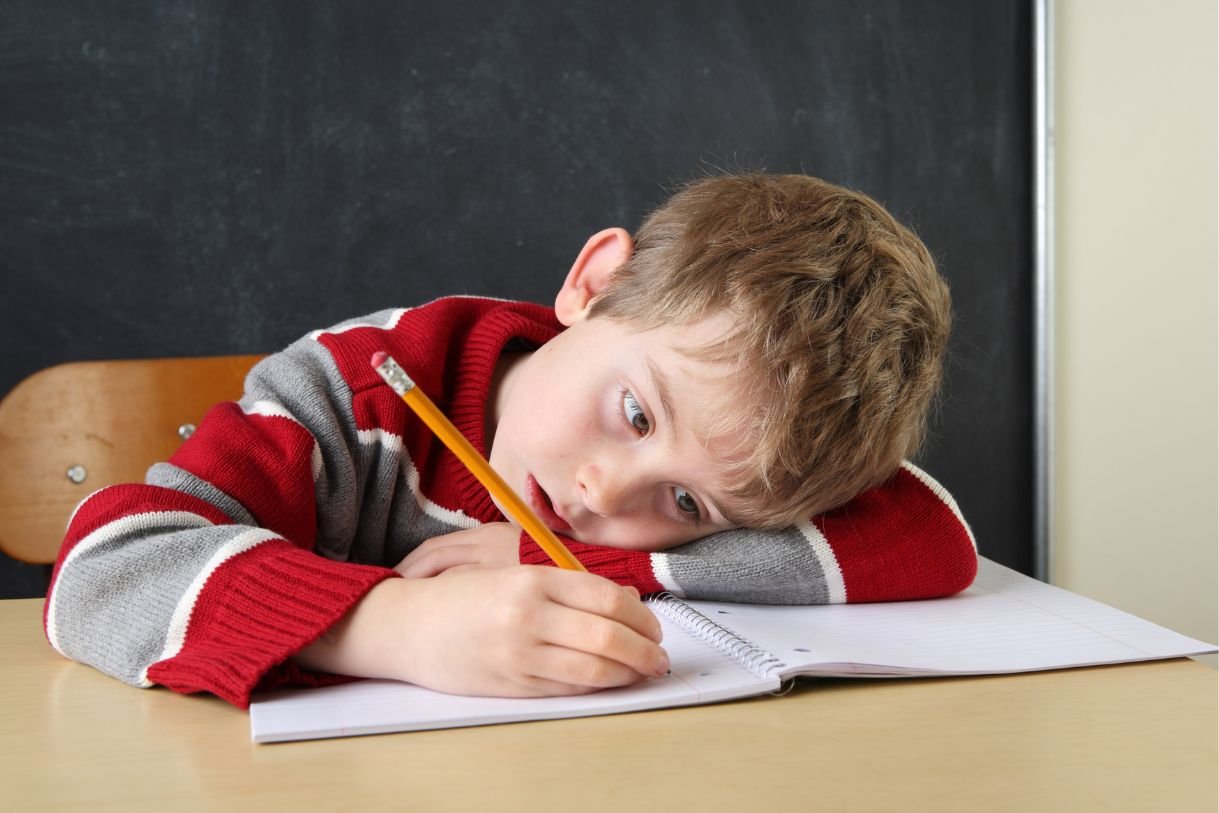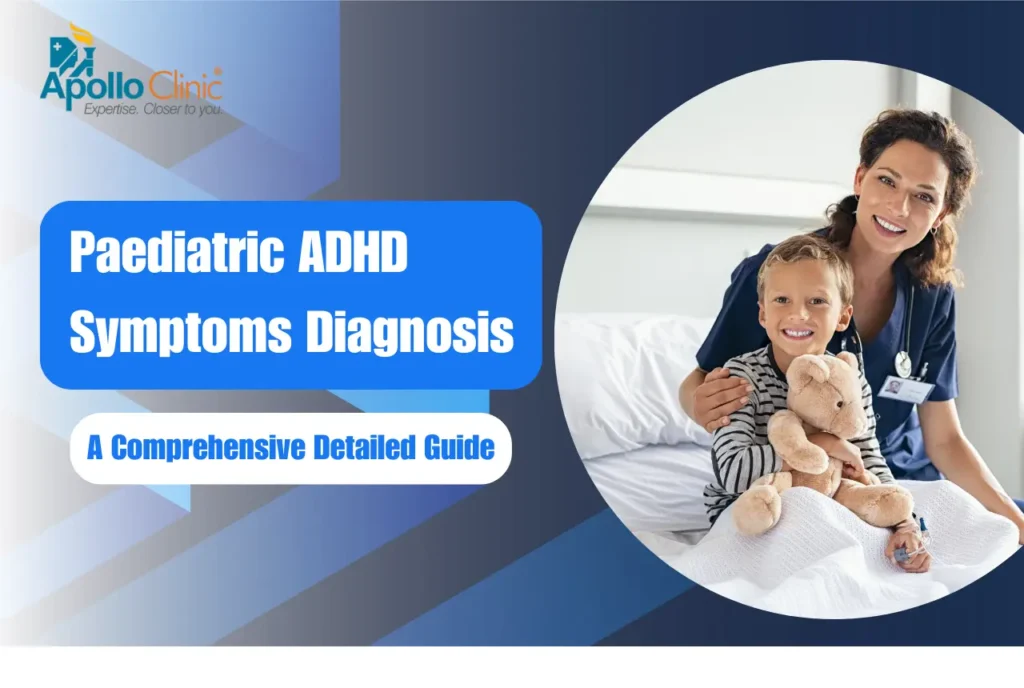Paediatric ADHD Symptoms Diagnosis: A Comprehensive Detailed Guide
What is Paediatric ADHD?
Paediatric ADHD, Attention Deficiency/ Hyperactivity Disorder is a behavioural development in a child that starts at a very early age. This is a common neurodevelopmental condition or a long-term disorder affecting millions of kids and often lasts into adulthood. ADHD is a group of long-lasting issues, like having trouble focusing, being too active, and acting without thinking.
It’s possible for kids with ADHD to also have low self-esteem, social problems, and trouble in school. Sometimes the symptoms get better as you age. However, some people with ADHD never fully get over their symptoms.

Getting help for ADHD won’t fix it, but it can help a lot with the symptoms. Medications and behavioural changes are often used together in treatment. Early care and diagnosis can make a big difference in how well the person does.
What are the Paediatric ADHD symptoms?
The following types of symptoms an ADHD child might show up at an early stage of 4 years to 6 years. People who have attention-deficit/hyperactivity disorder (ADHD) often have trouble with being attentive, hyperactivity, and impulsivity.
Inattention means having trouble focusing, hyperactivity means having too much energy or being restless, and impulsivity means moving without thinking about it or having trouble controlling yourself.
-
Inattention
The patterns of being inattentive you might see in a child are:
- Not being able to focus minutely or being careless in school activities.
- Low span of attention in a specific task.
- Failing to complete a task or having trouble completing a task.
- Facing trouble in listening to what others say.
- Avoid or dislike things that need a lot of mental attention.
- Gets distracted easily.
- Problem in organising tasks, activities, and other belongings.
-
Hyperactivity

Hyperactivity is another symptom of being a child diagnosed with ADHD. The patterns are :
- Aggressive shaking legs or fidgeting or squirming when seated.
- Constantly moving from one place to another.
- Trouble sitting in one place.
- Cannot sit quietly for long.
- Excessively speaking or talking.
-
Impulsivity
Being impulsive is also a symptom of an ADHD child. Some of the patterns include:
- Interrupting others between other conversations.
- Facing problems in doing things quietly.
- Facing trouble in waiting for their own turn.
- Impatient.
- Always in a hurry to answer any questions.
- Outburst of anger and breaking of stuff.
Types of Paediatric ADHD
There are three types of paediatric ADHD:
- Combined ADHD:
Combined ADHD is characterised by a combination of impulsive, hyperactive, and inattentive behaviours. When diagnosed with combined ADHD, individuals exhibit neurodevelopmental traits associated with all three aspects—impulsivity, hyperactivity, and inattention. It is also one of the most common types of ADHD most children are diagnosed with.
- Impulsive/ Hyperactive ADHD:
ADHD, impulsive/hyperactive type, is the least common form of ADHD, marked by impulsive and hyperactive behaviours without the prominent features of inattention and distractibility. Individuals with this type of ADHD may primarily display impulsivity and hyperactivity without the same level of difficulty in sustaining attention.
- Inattentive ADHD:
ADHD, the inattentive and distractible type, is characterised primarily by inattention and distractibility, without the hyperactive behaviours typically associated with other forms of ADHD. Individuals with this type may struggle with sustaining focus and may easily become distracted.
Paediatric ADHD Symptoms Diagnosis Guidelines

ADHD is the most common disorder that a child is diagnosed with. If you think your child is having trouble with any of the symptoms mentioned above which enables them to function properly in their day-to-day life. Then it is time to consult your child’s doctor.
ADHD is typically identified by a paediatrician, Child Psychiatrist, or qualified mental health professional. The process of diagnosis involves gathering a detailed history of the child, the parents and teachers must give a thorough history of the child’s behaviour and the child must be observed, the psychoeducational tests must be administered.
Diagnosing ADHD involves assessing results from multiple sources, such as medical, neurological, and psychological testing, due to its manifestation as a collection of symptoms. Certain examinations can assist in eliminating alternative disorders, while others evaluate cognitive abilities and particular proficiencies. It is imperative to seek advice and guidance from your child’s physician for further information.
To be sure that a child has ADHD, the following Paediatric ADHD symptoms diagnosis guidelines are used:
- The symptoms produce some impairment and appear in two or more situations.
- To detect ADHD in a 17 year period there must be 6 or more symptoms.
- To detect ADHD in a 4 to 17 year there must be 5 or more symptoms.
- ADHD limits your child’s ability to function in daily life, such as academics, relationships, etc.
- Symptoms appear before age 12. These signs may not be diagnosed as ADHD until a child is older.
- The symptoms have been going on for over six months.
The paediatrician will examine your child’s behaviour, body, and brain. A complete comprehensive medical history is important to understand your child’s behaviour and screen for other conditions.
How do you manage or treat ADHD?
The main objective of ADHD treatment is to optimise a child’s functionality in both home and school settings by addressing symptoms. Parental intervention is often recommended as the primary course of action for children aged 4 and 5, before considering medication.
For older children, teenagers, and adults, the most efficient treatment for ADHD usually consists of a combination of behavioural therapy and medication. This comprehensive strategy tries to target both the behavioural and cognitive elements of ADHD to effectively treat symptoms.
Therapy:
For children under the age of 13, providers recommend that parents receive behaviour management training. People with ADHD can benefit from behavioural treatment, which teaches them useful skills to handle their symptoms and improve their daily functioning. Other types of behavioural therapy for adolescents, such as social skills or executive function training, are recommended.
Behavioural therapy tries to improve positive behaviours while eliminating negative ones. Executive function training focuses on developing organisational abilities and self-monitoring, which contributes to a more holistic approach to addressing ADHD symptoms across age groups.
Cognitive-behavioural treatment (CBT), which is often used for ADHD, focuses on changing the negative thoughts and behaviours that make the symptoms worse. Training in social skills and play therapy are two other types of behavioural therapy that can help kids with ADHD. It’s important to note that behavioural therapy is often used with other treatments, like medication, to fully handle and manage ADHD symptoms.
Some of the other Therapies are
- Parent-child interaction Therapy.
- Parent Training.
- Social skills Training.
- Family Therapy.
Therapists and teachers can also work together with kids.
Medication:
Before choosing to pick up any medicine for ADHD, it is advisable to consult your child’s doctor. People with ADHD can control their symptoms and the behaviours that bother them by taking medicine.
Most of the medications prescribed to kids are called stimulants, which help them calm down, concentrate, and keep their urges in check.
Methylphenidate and dextroamphetamine, which are sold under the brand names Ritalin and Adderall, are the two most popular drugs.
Antidepressants are also one type of medication used by ADHD-diagnosed kids. Though antidepressants have not been cleared by the FDA as a way to treat ADHD. Doctors do, however, sometimes recommend them on their own or along with another ADHD drug.
Some major side effects of these drugs are headaches, not being hungry, and trouble sleeping. If these side effects happen in kids, they might be given medicine that doesn’t stimulate the brain instead.
ADHD signs will often get better or go away in many kids by the time they are young adults. Some people still have problems with ADHD symptoms, especially not paying attention and controlling their impulses.
Risk Factors to be Considered:
Common diagnoses for children with ADHD include oppositional defiant disorder, anxiety, and sadness. Children may have Tourette’s syndrome. ADHD therapies work best when combined with other mental health issues.





